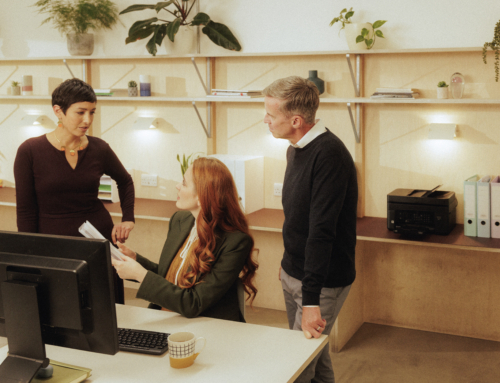Through co-innovation with a core group of customers, Lockstep was able to solve for key AR pain points.
Earlier this year, Lockstep released our much-anticipated Self-Service tool. Lockstep Self–Service better enables receivables teams to collect money from customers. This product evolves how accounts receivable teams present and communicate to customer accounts payable departments. Self–Service allows a customer to see invoices, due dates, pay bills, see contact information and more. In this rare behind the scenes look, Lockstep’s Kelley Shanahan takes us through the creation process in order to build better products for our customers.
“It’s important to bring our users into the conversation when designing new experiences because they are the ones we are creating for,” notes Shanahan, Lockstep’s Product Design Lead. “In order for our products to be successful we need them to meet the needs of our users. Co-creating these experiences together makes for better products and more meaningful experiences for our customers.”
And that is the approach taken by Shanahan and team. Through a series of steps, from ideation through implementation, customer insight and feedback were crucial to the design and development of Lockstep Self-Service. The team spent countless hours interviewing and researching with existing customers. In all, the team interviewed about 15% of Lockstep’s total customer base throughout the process. “We talked to a lot of customers over the course of the project conception,” notes Shanahan.
One of the key pain points for organizations is “how do I get my customers to pay their bills faster?”. This question, one that popped up over and again in discussions, led the product team to unpack these instances and begin further outreach to customers to research what and how Lockstep can help. As the team dove deeper into the challenges for our customers three key trends emerged:
- Customers wanted to provide an online experience for their customers to pay bills digitally (eliminating (or at least cutting down on) paper checks).
- Customers did not have a clear, way to track payment history.
- Vendors didn’t have a convenient way for customers to see their outstanding invoices.
To solve for these challenges, the Lockstep team decided to replace its long-standing portal from the bottom up, co-creating with existing customers to build an enhanced experience. At the same time, the team spoke with accounts payable (AP) team members as well. Knowing what the AP side required to fulfill invoices was essential to the success of the project.
“I love anytime I get to speak with our customers and unpack their needs. They provide the most valuable feedback on our products and getting to hear their thoughts and feelings is so important for our process,” says Shanahan.
Once the framework and scope were set, the team got to building. Going from conversations to design, navigation strategy to screen design to test, validating with customers along the way. “Once we had initial concepts for the product we shared them with users over Zoom calls and had them complete tasks with our prototypes,“ notes Shanahan.
Lockstep conducted user research and usability sessions throughout the project. Including our users in every step of the process from design through post-launch, was essential to the success and viability of the product.
Co-Innovating with customers is the key to Lockstep success in launching Self-Service. It was a gradual and iterative process so that our users were involved in the conception of the product right from the start.
“Our customers that they are happy that their customers can pay online and leverage Self-Service to see all of their invoices. It’s created a more streamlined workflow for our customers!”
Lockstep Self-Service better enables receivables teams to collect money from customers. Empower your customers to virtually access invoices, make payments, and see communications to save time for everyone. Request a demo with a Lockstep product specialist, today, for more details.




